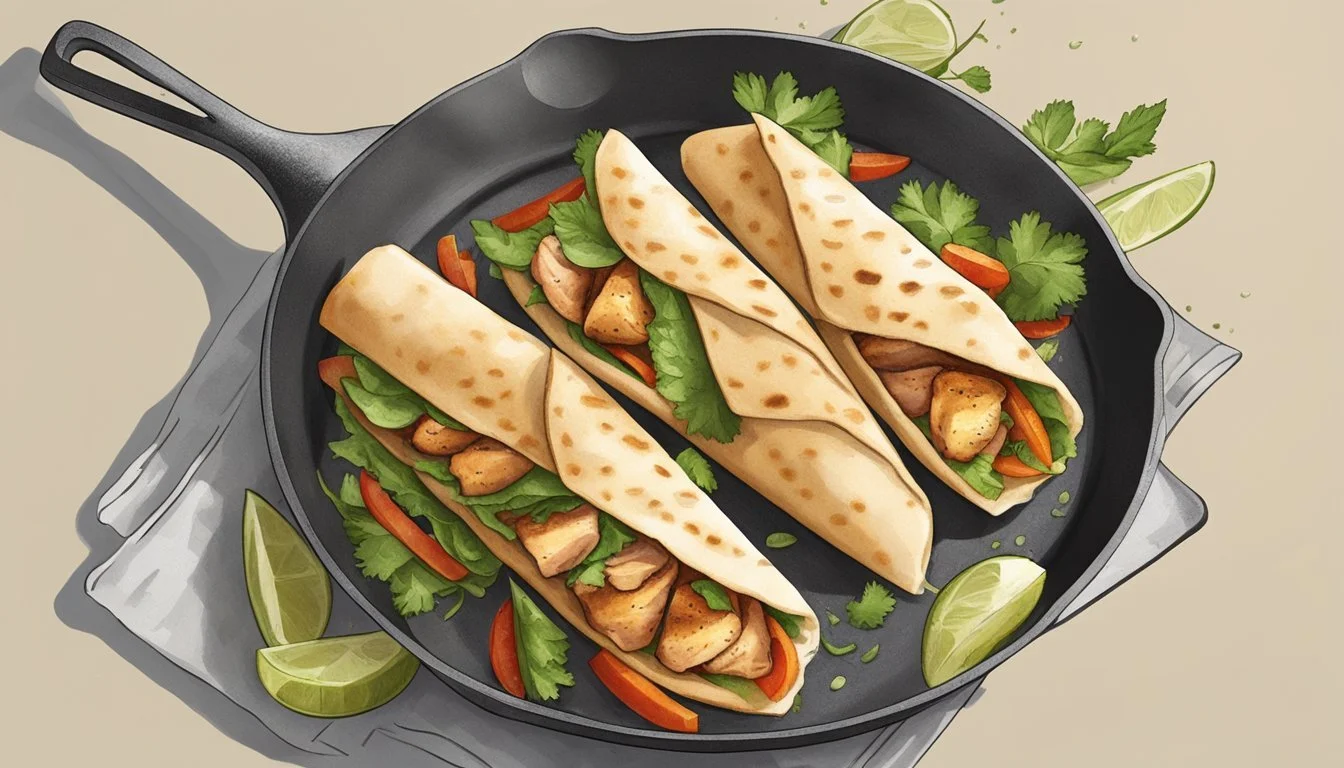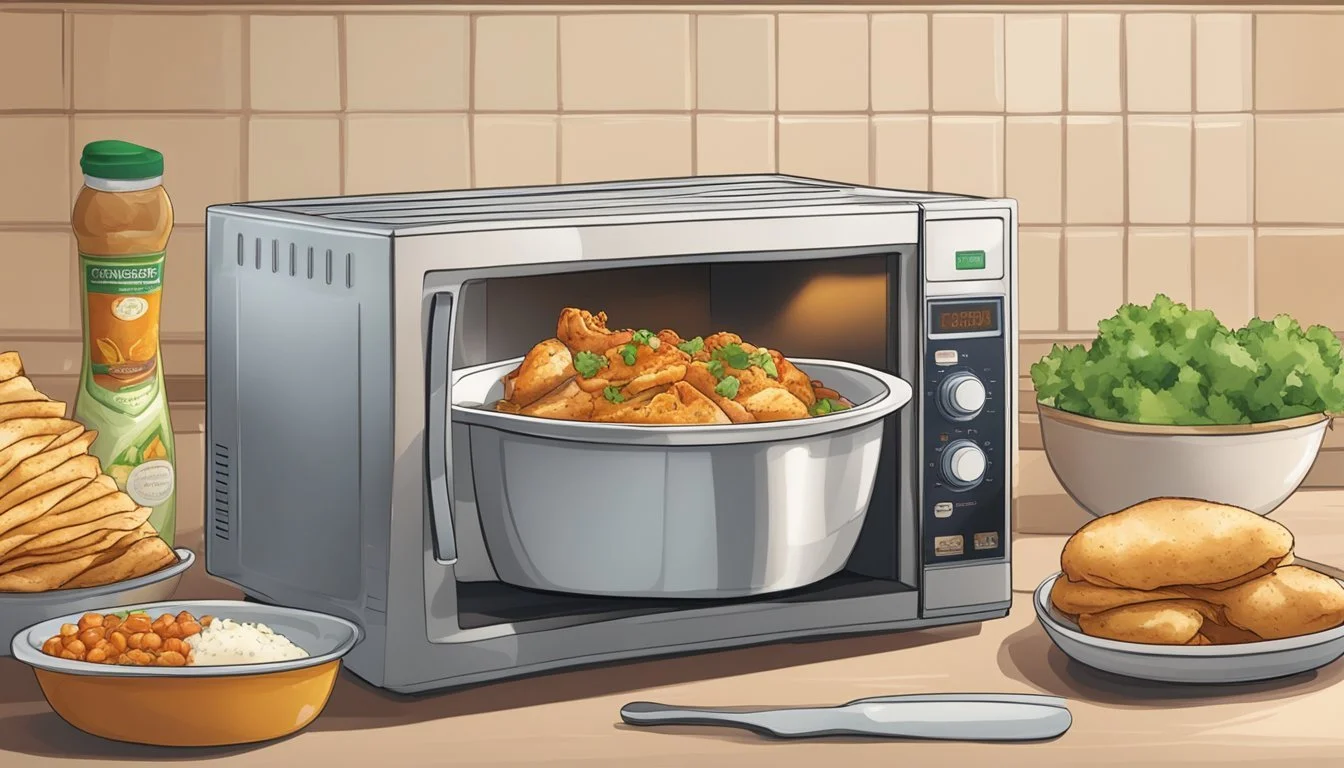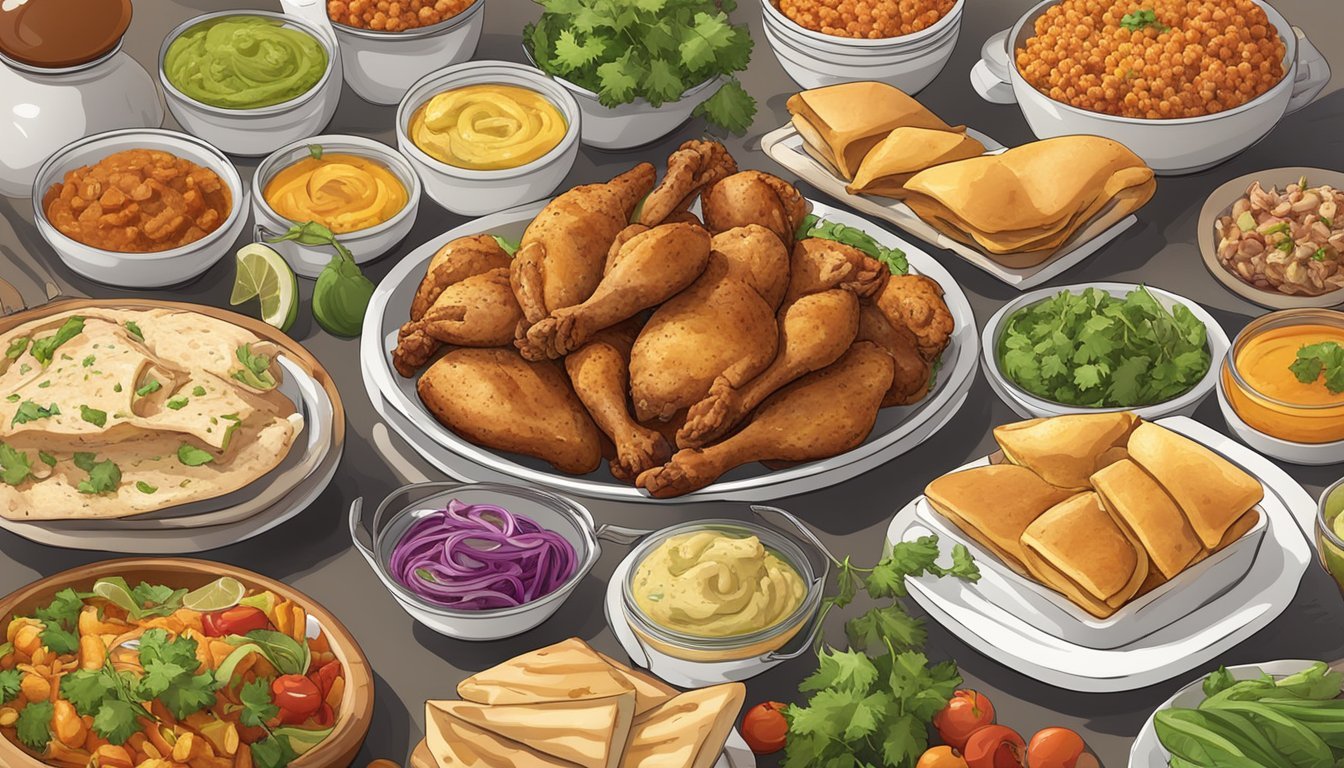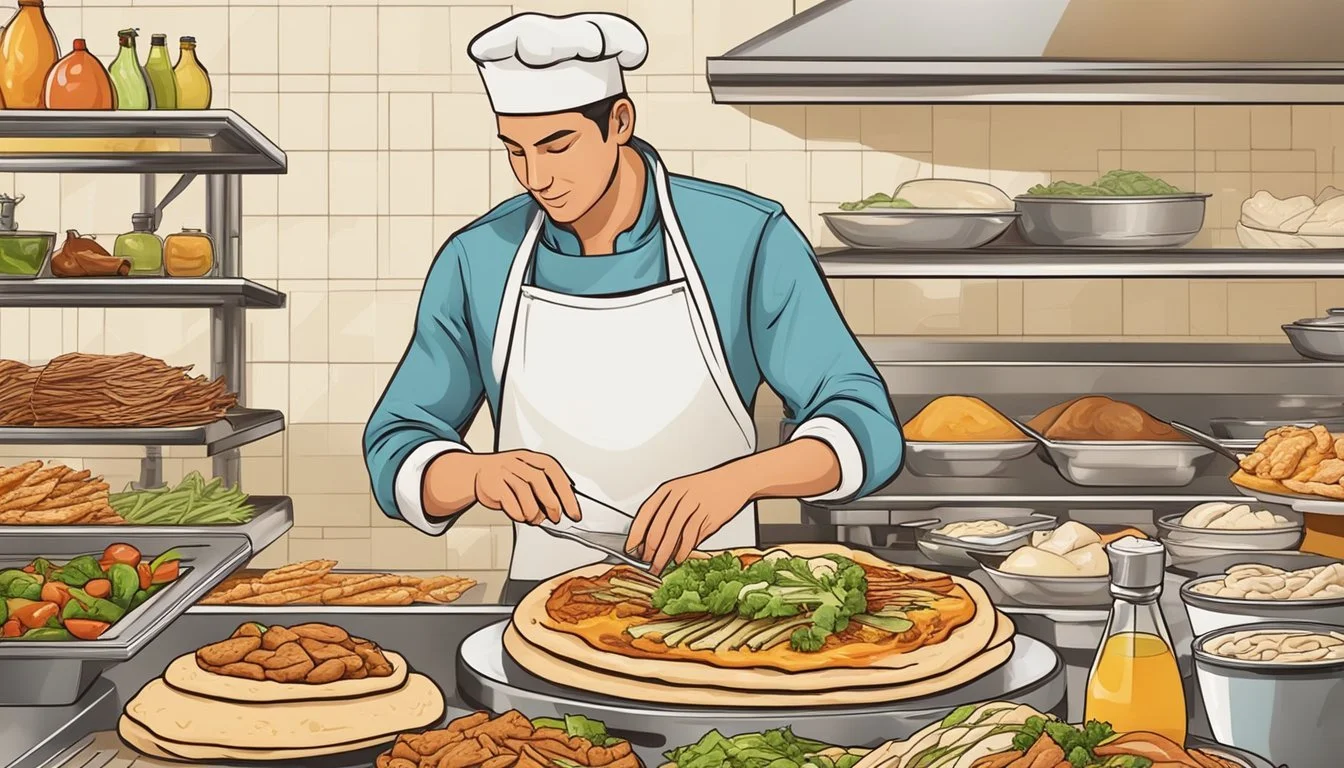Best Way to Reheat Chicken Shawarma
Ensuring Tender Meat and Soft Pita Every Time
Chicken shawarma (What wine goes well with chicken shawarma?), a beloved Middle Eastern dish, is cherished for its rich flavors and the perfect balance of tender meat wrapped in soft, warm pita. The challenge of reheating shawarma often lies in preserving the meat’s moisture and maintaining the pita's texture. When not done properly, the succulent chicken can become dry and the bread tough, compromising the overall enjoyment of the dish.
It is crucial to choose a reheating method that not only ensures the chicken reaches a safe internal temperature but also keeps the shawarma as close to its original state as possible. Various techniques can be employed to achieve this, from the convenience of a microwave to the even heating of an oven or air fryer. Each method holds the potential to restore the shawarma's intended delight with careful attention to temperature, time, and moisture management.
The key to successful reheating is a gentle approach that evenly warms both chicken and pita while retaining the characteristic tenderness and softness. By using a combination of heat control and protective coverings, one can lock in the moisture, preventing drying out and achieving a meal that is both safe to consume and enjoyable as if freshly made.
Understanding the Basics of Reheating
Reheating chicken shawarma involves a delicate balance of maintaining moisture, texture, and ensuring the food reaches a safe internal temperature. Key to this process is understanding how heat interacts with the ingredients and selecting the right method to achieve tender meat and soft pita.
The Science of Heat and Moisture Retention
When one reheats chicken shawarma, heat transfer is critical to warming the food without drying it out. Moisture retention is essential for keeping both the chicken tender and the pita bread soft. The goal is to gently warm the shawarma while preventing moisture from escaping. Techniques such as covering the food with a lid or damp paper towel can help retain moisture during the reheating process.
Selecting the Right Reheating Method
Choosing an appropriate reheating method is crucial for optimal texture and moisture conservation. The oven is often recommended for its consistent heating, which encases the shawarma in dry, evenly distributed heat, helping to avoid sogginess. The microwave offers convenience and speed, while utilizing a skillet on the stove provides the benefit of quick, localized heat with the chance for slight crisping. Each method can be effective when used correctly:
Oven: Heat at a moderate temperature (around 350°F) and cover with foil to trap steam.
Microwave: Use a lower power setting and cover with a damp towel to distribute heat evenly and retain moisture.
Skillet: A light touch of oil and a medium heat setting allow for a controlled reheat, turning occasionally.
Temperature Control for Optimal Results
The internal temperature of the chicken shawarma is a crucial element that ensures both safety and quality. It should reach 165°F to be safe to consume, as per food safety guidelines. Utilizing a meat thermometer can confirm that the appropriate internal temperature is achieved without overcooking. Since heat continues to distribute for a short period after removal from the oven, microwave, or skillet, allowing the shawarma to rest briefly can be beneficial in reaching the desired temperature evenly across the dish.
Preparing Chicken Shawarma for Reheating
Proper preparation of leftover chicken shawarma for reheating is crucial to maintaining the dish’s tenderness and the pita’s softness. This involves correct storage and key pre-reheating practices to keep the quality of the meal.
Storage Tips for Leftover Shawarma
Short-Term Storage:
Wrap tightly in plastic wrap or aluminum foil to prevent air from drying out the meat and pita.
Place in the coolest part of the refrigerator, typically at the back, to maintain a consistent temperature.
Long-Term Freezing:
Separate the chicken from the pita if planning to freeze.
Wrap the chicken securely in foil or use an airtight container.
For the pita, first cool completely, then wrap in foil and place in a freezer-safe bag.
Label the contents and the date; leftovers should be consumed within 3 months for optimal quality.
Pre-Reheating Steps to Maximize Quality
Chicken Preparation:
Thaw the chicken shawarma in the refrigerator if frozen.
Lightly coat with olive oil to prevent drying out and to keep the chicken moist.
Pita Preparation:
Pitas should be brought to room temperature before reheating to avoid becoming too tough.
Lightly dampen the pita with water to restore moisture.
Utilizing these methods will help ensure that one's chicken shawarma retains its delicious flavors and ideal texture upon reheating.
Best Reheating Techniques for Chicken Shawarma
Reheating chicken shawarma properly can maintain the meat's tenderness and keep the pita soft. Below are some effective methods tailored to various preferences, from maintaining juiciness to achieving a crispy texture.
Oven Reheating for Even Heating
Reheating chicken shawarma in the oven is a preferred method for even heating. To maintain moisture, it is suggested to preheat the oven to 350°F and wrap the shawarma in foil before placing it in the oven. This method typically takes about 10-15 minutes, and one should check the internal temperature to ensure it reaches 165°F.
Skillet Method for Crispy Texture
For those who favor a crispy texture, using a skillet is effective. Add a small amount of oil to a skillet over medium heat and cook the chicken shawarma until it's heated through and the outside is crispy. Regular stirring or flipping is necessary for even reheating and preventing burning.
Microwave Reheating for Speed and Convenience
Microwave reheating offers speed and convenience. One should cover the chicken shawarma with a damp towel to keep moisture in and microwave on full power for about 40 seconds. It's important to check the warmth of the chicken after reheating since microwave power levels can vary.
Using an Air Fryer for Juiciness and Crispiness
An air fryer is a great tool to reheat chicken shawarma, achieving juiciness with a bit of crispiness. It is recommended to place the chicken shawarma in the air fryer basket and reheat for 5-7 minutes at 350°F, flipping halfway through. The internal temperature should reach 165°F for safety.
Alternative Methods
While not as commonly used, other reheating alternatives might include using a steamer to keep the chicken moist or a toaster oven for a quick reheat similar to a conventional oven. Each method requires monitoring to ensure the chicken does not overcook or dry out.
Adjusting Flavors and Textures Post-Reheating
When reheating shawarma, one often faces the challenge of dry meat and bread. This section provides effective strategies to revive the texture and taste of shawarma, ensuring the meal remains as enjoyable as when first prepared.
Restoring Moisture with Sauces and Dressings
The key to maintaining the moisture in chicken shawarma is to introduce sauces and dressings after heating. One can drizzle lemon juice and olive oil on the chicken to enhance juiciness without overpowering its natural flavor. Additionally, tahini sauce, with its toasted, nutty profile, can be lightly applied not only to add creaminess but also to complement the shawarma's original seasonings.
Sauces to consider:
Tahini sauce
Garlic yogurt sauce
Hummus
Enhancing Taste with Fresh Spices and Toppings
To heighten the shawarma's taste, freshly adding spices and toppings is highly effective. A pinch of salt can amplify the existing flavors, while garlic, cumin, and paprika can be sprinkled lightly to recreate the shawarma's aromatic profile. For the filling, fresh vegetables or pickles can introduce both flavor and crunch, revitalizing the entire meal.
Toppings to rejuvenate flavor and texture:
Fresh sliced cucumbers
Diced tomatoes
Chopped parsley
Pickled turnips
Accompaniments and Side Dishes for Shawarma
Selecting the appropriate sides for shawarma enhances the meal, balancing flavors and adding texture. Here are tailored options to perfectly match your shawarma.
Choosing the Right Side Salads and Vegetables
Salads and vegetables provide freshness and crunch to complement the tender shawarma meat. They recommend options like:
Tabbouleh Salad: A refreshing mix of parsley, tomatoes, and bulgur wheat, dressed with lemon juice and olive oil.
Chickpea Salad: Protein-rich chickpeas combined with crisp cucumbers and sweet cherry tomatoes make a nutritious side.
Grilled Vegetable Skewers: Alternating pieces of bell peppers, onions, and zucchini, lightly seasoned and grilled.
For a simple touch, a salad featuring crisp lettuce, ripe tomatoes, and onions offers a straightforward yet satisfying accompaniment.
Complementary Bread Options Beyond Pita
While traditional, pita isn't the only bread that can be served with shawarma. They suggest exploring:
Lavash: A soft, thin flatbread that wraps around shawarma fillings easily.
Tortillas: For a fusion take, warm tortillas can substitute for traditional Middle Eastern bread.
Warm these bread alternatives to ensure they remain soft and pliable, ready to be stuffed with shawarma and toppings.
Creative Topping Variations for Chicken Shawarma
Toppings can turn a simple shawarma into a gourmet experience. Consider these inventive toppings:
Garlic Yogurt Sauce: Its creamy nature contrasts the spices of the meat.
Pickled Red Cabbage: Adds a zingy and colorful element to the dish.
For added excitement, they can sprinkle fresh herbs like cilantro or parsley to introduce a burst of flavor and vibrant color.
Safety Considerations When Reheating Chicken
Reheating chicken shawarma safely is paramount to prevent foodborne illnesses. It requires adherence to food safety guidelines and the use of a food thermometer to ensure the internal temperature is sufficient.
Understanding Food Safety Guidelines
Food safety guidelines are designed to mitigate the risks associated with consuming improperly reheated leftovers. For chicken, it is crucial that the meat reaches an internal temperature of at least 165°F to kill any potential bacteria that could cause illness. When reheating chicken shawarma:
Do not leave the chicken at room temperature for more than 2 hours; 1 hour if the temperature is above 90°F.
Store leftovers within these time frames at a safe temperature, below 40°F, before reheating.
Always reheat only the portion needed to avoid multiple reheating sessions, which may increase the likelihood of bacterial growth.
Using a Food Thermometer for Safe Reheating
Utilizing a food thermometer is necessary for ensuring that chicken shawarma reaches the required internal temperature. Here's how to do it correctly:
Preheat the oven, microwave, air fryer, or stovetop before reheating to ensure even heat distribution.
Place the chicken shawarma in the device and heat.
Halfway through the reheating process, rotate or stir the chicken to encourage uniform heating.
Once reheating is done, insert a food thermometer into the thickest part of the chicken without touching the bone or the container.
If the thermometer reads 165°F or higher, the chicken is safe to consume.
If the temperature is below 165°F, continue to heat and check periodically until the safe temperature is achieved.
FAQs on Reheating Chicken Shawarma
Q: What is the safest way to reheat chicken shawarma?
A: For safety, the chicken shawarma should reach an internal temperature of 165°F. One can use a meat thermometer to check this. Microwaves, ovens, stovetops, and air fryers are all suitable options for reheating.
Q: How do I keep the chicken moist when reheating?
A: To retain moisture, one can cover the chicken with a lid or aluminum foil when using an oven, or a microwave-safe lid or damp paper towel when using a microwave. Adding a splash of water or broth can also help.
Oven: Preheat to 350°F. Cover the chicken in foil. Heat for about 10-15 minutes.
Microwave: Set to medium power. Cover and heat for about 40 seconds, then check.
Stovetop: Use medium heat. Add oil to the pan, place chicken in, and cook until warm.
Air Fryer: Heat at 350°F for 5-7 minutes; flip halfway through.
Q: Can I reheat chicken shawarma with pita bread attached?
A: Yes, though it's best to wrap it in foil before heating in an oven to prevent the pita from hardening. If using a microwave, the pita might soften but could also become somewhat chewy.
Q: What's the most efficient way to reheat chicken shawarma leftovers?
A: The microwave is the quickest for small portions. For larger amounts or the best flavor retention, using an oven or stovetop is more efficient.
Q: How long can I keep reheated chicken shawarma before it becomes unsafe to eat?
A: Leftovers should be consumed within two hours of reheating. If one needs to store them again, they should be refrigerated within that two-hour window and consumed within 3-4 days.
Customizing Shawarma for Dietary Needs
Shawarma's versatility allows for various dietary adjustments without compromising flavor or texture. This section explores gluten-free bread alternatives, vegetarian and vegan substitutes, and low-carb options to accommodate diverse dietary requirements.
Making Shawarma Gluten-Free with Alternative Breads
For those avoiding gluten, traditional pita bread can be substituted with gluten-free alternatives. Corn tortillas are a popular choice, offering a soft yet sturdy base for shawarma. They must be warmed properly to prevent breaking. Gluten-free wraps made from tapioca or rice flour also serve as excellent options, providing a similar texture and neutral taste that complements the shawarma's seasoning.
Vegetarian and Vegan Shawarma Options
Vegetarians and vegans can enjoy shawarma by replacing chicken thighs (What wine goes well with chicken thighs?) or breasts with plant-based proteins. Tofu, when well-pressed and marinated, can mimic the savory flavors of shawarma spices. Additionally, jackfruit has a meaty texture that absorbs flavors well, making it a suitable vegan substitute. These plant-based fillings can be easily incorporated into meal prep routines for convenient and satisfying eats.
Preparing Low-Carb Shawarma for Keto Dieters
Low-carb enthusiasts, such as keto dieters, can still savor shawarma by omitting bread entirely or by choosing low-carb wraps. Lettuce leaves present a fresh, crisp option for wrapping shawarma fillings. For a more bread-like texture, thin omelette layers or cheese wraps can replace traditional pita, allowing the seasoned chicken or alternative proteins to shine while keeping the dish within low-carb boundaries.






